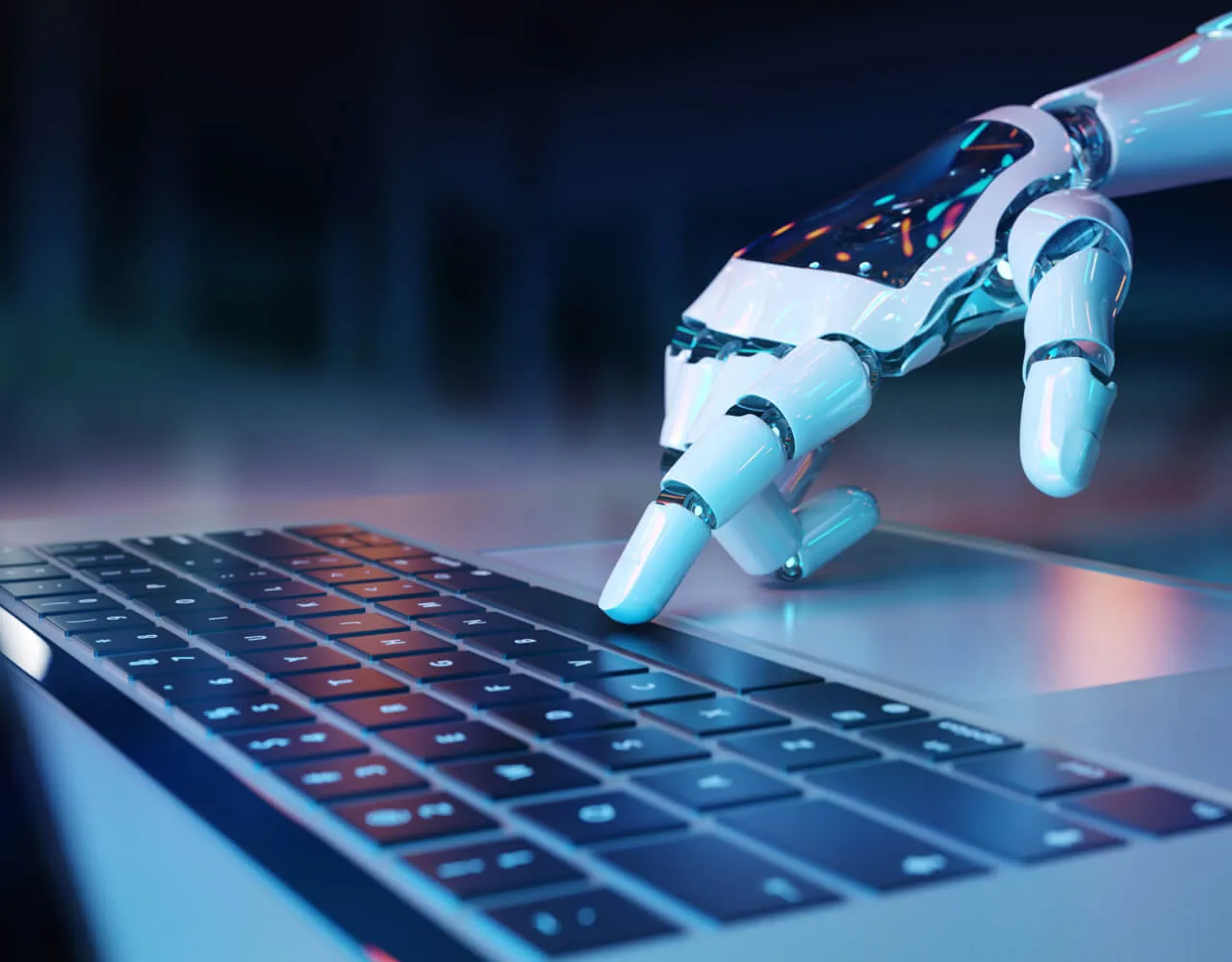Difference between Stable Diffusion Development and Other AI Development Approaches

Stable Diffusion Development is an advanced approach in AI development that focuses on creating robust and stable AI models. It differs from other AI development approaches in the following ways:
Objective: Stable Diffusion Development aims to enhance the generalization capability of AI models, ensuring they perform consistently well on both seen and unseen data, whereas other approaches may prioritize accuracy on the training data without considering generalization.
Better Stability: This method incorporates mathematical techniques to stabilize the learning process, mitigating issues like overfitting and improving model stability, which may not be a primary concern in other AI development approaches.
Improved Consistency: Stable Diffusion models provide more consistent and reliable predictions, making them suitable for real-world applications where consistent performance is essential, while other AI approaches might exhibit variations in performance on different data samples.
Handling of Complex Data: Stable Diffusion models can handle complex and noisy data more effectively, enabling them to excel in scenarios with limited or imperfect data, which might challenge traditional AI development approaches.
Large Application Scope: Stable Diffusion Development is well-suited for various AI tasks, including natural language processing, computer vision, recommendation systems, and anomaly detection, providing a broader range of applications compared to some other AI approaches specialized for specific tasks.
Different Training Process: Stable Diffusion models may involve different training processes and techniques to achieve stability and generalization, setting them apart from standard supervised learning approaches.
Use of Advanced Techniques: Stable Diffusion Development often incorporates advanced mathematical concepts and methodologies to ensure stable model convergence and better handling of complex data, making it more sophisticated than some traditional AI approaches.
Better Integration: Stable Diffusion models can be integrated with other AI techniques and frameworks, allowing for hybrid approaches that leverage the strengths of different AI methodologies, flexibility not always present in conventional AI development methods.
Key Benefits of Implementing Stable Diffusion in AI-powered solutions
Implementing Stable Diffusion in AI-powered solutions offers a range of crucial benefits that enhance their performance, reliability, and overall effectiveness:
- Enhanced Generalization: Stable Diffusion models excel at generalizing to unseen data, resulting in more accurate predictions and better performance in real-world scenarios.
- Robustness: Stable Diffusion helps build more robust AI models and is less sensitive to noisy or imperfect data, reducing the risk of making erroneous predictions.
- Mitigating Overfitting: Stable Diffusion techniques aid in mitigating overfitting issues, ensuring that the model doesn’t memorize the training data but learns meaningful patterns from it.
- Improved Consistency: Stable Diffusion models exhibit consistent performance across different data samples, providing reliable results and reducing unpredictability.
- Better Handling of Complex Data: Stable Diffusion effectively handles complex and high-dimensional data, making it suitable for tasks involving intricate patterns and structures.
- Reduced Need for Extensive Data: With its superior generalization, Stable Diffusion reduces the need for excessive training data, leading to faster development and cost savings.
- Efficient Learning: Stable Diffusion development facilitates more stable and efficient model convergence, reducing training time and computational resources.
- Adaptability: Stable Diffusion models can be fine-tuned and adapted to various domains and applications, offering flexibility and scalability in AI implementations.
- Real-world Applicability: By minimizing overfitting and improving generalization, Stable Diffusion models are better suited for practical applications, leading to more impactful AI-powered solutions.
- Competitive Advantage: Leveraging Stable Diffusion in AI development can give businesses a competitive edge by delivering more reliable and accurate AI solutions.
Adopting Stable Diffusion in AI-powered solutions contributes to their robustness, reliability, and real-world applicability, making them a valuable asset in various industries and domains.
Prerequisites for Incorporating Stable Diffusion into Our AI Infrastructure
Incorporating Stable Diffusion into your AI infrastructure requires careful preparation and specific prerequisites to ensure successful implementation and optimal results.
Some key prerequisites include:
- Data Quality and Preprocessing: High-quality and well-preprocessed data is essential for Stable Diffusion models to perform effectively. Ensure your data is clean, relevant, and representative of the real-world scenarios you aim to tackle.
- Domain Expertise: Familiarity with the domain and the specific problem you intend to address with Stable Diffusion is crucial. Domain expertise helps in understanding the intricacies of the data, selecting appropriate features, and interpreting the results accurately.
- AI Development Knowledge: A solid understanding of AI development and machine learning concepts is necessary to effectively work with Stable Diffusion models. Familiarity with traditional AI techniques and machine learning algorithms will aid in making informed decisions during development.
- Mathematical Fundamentals: Stable Diffusion involves advanced mathematical techniques and concepts. A good grasp of linear algebra, calculus, optimization, and probability theory will facilitate a deeper understanding of Stable Diffusion models and their behavior.
- Infrastructure and Computing Resources: Stable Diffusion models can be computationally intensive, especially for large datasets or complex architectures. Ensure you have adequate infrastructure and computing resources to support training and inference processes.
- Training Data Size: Stable Diffusion models perform better with larger datasets. Assess the availability of sufficient training data to train the models effectively.
- Model Interpretability: Depending on the application, interpretability may be crucial. Evaluate the interpretability of the Stable Diffusion models and whether it aligns with your specific business requirements.
- Model Evaluation Metrics: Define appropriate evaluation metrics to assess the performance of Stable Diffusion models. This will help compare different models and select the one that best suits your objectives.
- Scalability and Maintenance: Consider the scalability of the solution and the effort required for maintaining and updating the Stable Diffusion models as your AI infrastructure grows.
- Testing and Validation Processes: Establish rigorous testing and validation procedures to ensure the Stable Diffusion models perform as expected before deploying them in a production environment.
By fulfilling these prerequisites, you can lay a strong foundation for successfully incorporating Stable Diffusion into your AI infrastructure, unlocking its benefits, and enhancing the overall performance of your AI-powered solutions.
Specific Industries or Use Cases where Stable Diffusion has Shown Exceptional Performance
Yes, Stable Diffusion has demonstrated exceptional performance in various industries and use cases, particularly where robustness, reliability, and generalization are crucial. Some specific areas where Stable Diffusion has shown remarkable results include:
- Natural Language Processing (NLP): Stable Diffusion models have excelled in tasks such as text classification, sentiment analysis, language translation, and named entity recognition, providing more accurate and consistent results than traditional NLP approaches.
- Computer Vision: In computer vision applications like object detection, image segmentation, and facial recognition, Stable Diffusion has improved performance by handling complex visual data and producing reliable predictions.
- Anomaly Detection: Stable Diffusion has proven effective in detecting anomalies and outliers in various systems and processes, offering more robust and accurate anomaly detection than conventional techniques.
- Recommendation Systems: Stable Diffusion models have successfully built personalized recommendation systems, providing more reliable and relevant user recommendations based on their preferences and behavior.
- Medical Diagnostics: Stable Diffusion has demonstrated exceptional performance in medical diagnostics, such as identifying diseases from medical images or predicting patient outcomes based on clinical data, contributing to improved accuracy and reliability in healthcare.
- Financial Forecasting: Stable Diffusion models have shown promise in financial forecasting and time-series analysis, providing more stable and accurate predictions for stock prices, market trends, and economic indicators.
- Robotics and Autonomous Systems: Stable Diffusion has been applied in robotics and autonomous systems to enhance their decision-making capabilities, allowing for more reliable and adaptive behavior in dynamic environments.
- Fraud Detection: Stable Diffusion has been employed in the financial and cybersecurity domains to detect fraudulent activities and security breaches, offering improved fraud detection and reduced false positives.
- Industrial Process Control: Stable Diffusion models have been utilized in industrial settings for process control and optimization, increasing efficiency and reducing errors.
- Energy Management: Stable Diffusion has shown promise in optimizing energy consumption and management in various applications, leading to more efficient and sustainable energy usage.
These are just a few examples of industries and use cases where Stable Diffusion has demonstrated exceptional performance. Its robustness, stability, and ability to handle complex data make it a valuable tool in various AI applications, contributing to improved accuracy and reliability in diverse domains.
Challenges Encountered during Stable Diffusion Model Development
Stable Diffusion model development comes with its challenges, but with appropriate strategies and techniques, these challenges can be effectively addressed. Some common challenges include:
- Data Quality and Quantity: Stable Diffusion models require substantial and high-quality data for training. Addressing this challenge involves ensuring the availability of diverse and representative data and implementing data augmentation techniques to expand the dataset.
- Complexity and Interpretability: Stable Diffusion models can be complex, making them less interpretable than simpler models. Techniques like sensitivity analysis, visualization, and attention mechanisms can help gain insights into model behavior and improve interpretability.
- Hyperparameter Tuning: Stable Diffusion models have hyperparameters that need to be fine-tuned for optimal performance. Employing techniques like grid search, random search, or Bayesian optimization can aid in finding the right set of hyperparameters.
- Computational Resources: Training Stable Diffusion models can be computationally intensive, requiring substantial processing power and memory. Utilizing hardware acceleration (e.g., GPUs, TPUs) and distributed computing can help alleviate this challenge.
- Overfitting and Underfitting: Like in traditional machine learning, Stable Diffusion models can suffer from overfitting or underfitting. Regularization techniques, early stopping, and cross-validation are useful strategies to mitigate these issues.
- Transfer Learning and Fine-Tuning: Implementing transfer learning and fine-tuning for Stable Diffusion models requires carefully considering pre-trained models, selecting relevant layers to freeze or fine-tune, and managing the learning rates for each layer.
- Stability and Convergence: Ensuring model stability and convergence during training is crucial. Techniques like batch normalization, learning rate schedules, and adaptive optimization algorithms aid in achieving stable convergence.
- Model Size and Efficiency: Stable Diffusion models can be large and memory-intensive. Model compression techniques, such as pruning, quantization, and knowledge distillation, can reduce model size while maintaining performance.
- Handling Class Imbalance: Imbalanced datasets can negatively impact model performance. Techniques like class weighting, data resampling, or appropriate evaluation metrics (e.g., F1-score) help address class imbalance challenges.
- Deployment and Real-world Integration: Moving from development to deployment requires considerations like model serving, scalability, and integrating the model with existing systems. Deploying optimized and efficient inference pipelines ensures smooth real-world integration.
Developers can build more reliable, efficient, and effective Stable Diffusion models by understanding and proactively addressing these challenges, ensuring successful implementation in various AI applications and domains.
Ways to Combine Stable Diffusion Models with Other AI Techniques to Enhance Performance
Combining Stable Diffusion models with other AI techniques can enhance performance and more robust AI solutions. Some ways to achieve this synergy are:
- Ensemble Methods: Employing ensemble techniques like model averaging, bagging, or boosting, where multiple Stable Diffusion models are combined, can improve overall performance and reduce variance.
- Hybrid Models: Integrating Stable Diffusion models with traditional machine learning algorithms or rule-based systems can leverage the strengths of both approaches, leading to more accurate and interpretable results.
- Transfer Learning: Utilizing pre-trained Stable Diffusion models as feature extractors for downstream tasks allows leveraging knowledge learned from one domain to improve performance in related domains with limited data.
- Meta-Learning: Incorporating meta-learning approaches, where models are trained to adapt to new tasks quickly, can enhance Stable Diffusion models’ adaptability and generalization capabilities.
- Reinforcement Learning: Integrating Stable Diffusion models as function approximators in reinforcement learning frameworks can lead to more stable and efficient learning of optimal policies in dynamic environments.
- Data Fusion: Combining predictions from Stable Diffusion models with outputs from other AI models or data sources can provide more comprehensive and accurate insights.
- Active Learning: Using Stable Diffusion models to select informative samples for labeling in active learning scenarios can reduce the labeling effort and improve model performance with fewer labeled samples.
- Multi-Modal Learning: Integrating Stable Diffusion models with other AI models that handle different modalities (e.g., text, images, audio) can lead to more comprehensive and holistic AI solutions.
- Model Distillation: Employing knowledge distillation, where a complex Stable Diffusion model’s knowledge is transferred to a simpler model, can create more lightweight and efficient models without sacrificing performance.
- Domain Adaptation: Adapting Stable Diffusion models from one domain to another using domain adaptation techniques can improve performance in domains with limited labeled data.
By combining Stable Diffusion models with these complementary AI techniques, developers can leverage the strengths of each approach to create more powerful, accurate, and versatile AI solutions, tailored to specific application requirements and constraints.
Current Research Trends and Advancements in Stable Diffusion Development

As Stable Diffusion Development continues to evolve, several research trends and advancements have emerged to enhance the performance and applicability of Stable Diffusion models. Some current research trends include:
- Interpretable Stable Diffusion Models: Researchers are focusing on improving the interpretability of Stable Diffusion models to gain insights into model behavior and decision-making. Techniques like attention mechanisms, saliency maps, and model visualization are being explored to achieve better model interpretability.
- Transfer Learning Strategies: Advanced transfer learning techniques are being integrated into Stable Diffusion models to facilitate knowledge transfer across different tasks and domains, allowing models to adapt quickly to new scenarios with limited data.
- Adversarial Robustness: Addressing the vulnerability of AI models to adversarial attacks is a key research area. Developing Stable Diffusion models that are more robust against adversarial perturbations is gaining attention to improve model security and reliability.
- Meta-Learning for Stable Diffusion: Meta-learning approaches, where models learn to learn from a distribution of tasks, are being applied to Stable Diffusion models to enhance their adaptability and generalization capabilities across a wide range of scenarios.
- Continual Learning and Lifelong Learning: Research is focused on developing Stable Diffusion models that can continually learn from new data without forgetting previously learned information. Lifelong learning approaches help maintain model performance as new data is introduced.
- Uncertainty Estimation: Accurate estimation of uncertainty is critical for real-world AI applications. Advancements in uncertainty estimation techniques for Stable Diffusion models are being explored to make AI systems more reliable and trustworthy.
- Efficiency and Model Compression: Developing more efficient and lightweight Stable Diffusion models is an ongoing trend. Model compression techniques, such as pruning, quantization, and knowledge distillation, are applied to reduce model size and computational requirements.
- Self-Supervised Learning: Self-supervised learning techniques, where models learn from unlabeled data, are being combined with Stable Diffusion models to leverage large-scale, unannotated datasets and improve model performance.
- Multi-Task Learning: Research explores how Stable Diffusion models can be trained to perform multiple tasks simultaneously, enhancing model efficiency and generalization across various tasks.
- Domain Adaptation and Few-Shot Learning: Advancements in domain adaptation and few-shot learning are applied to Stable Diffusion models to improve performance in scenarios with limited labeled data or different target domains.
These research trends reflect the continuous efforts to enhance Stable Diffusion models’ capabilities and address real-world challenges, making them more versatile, efficient, and effective for various AI applications and domains.













